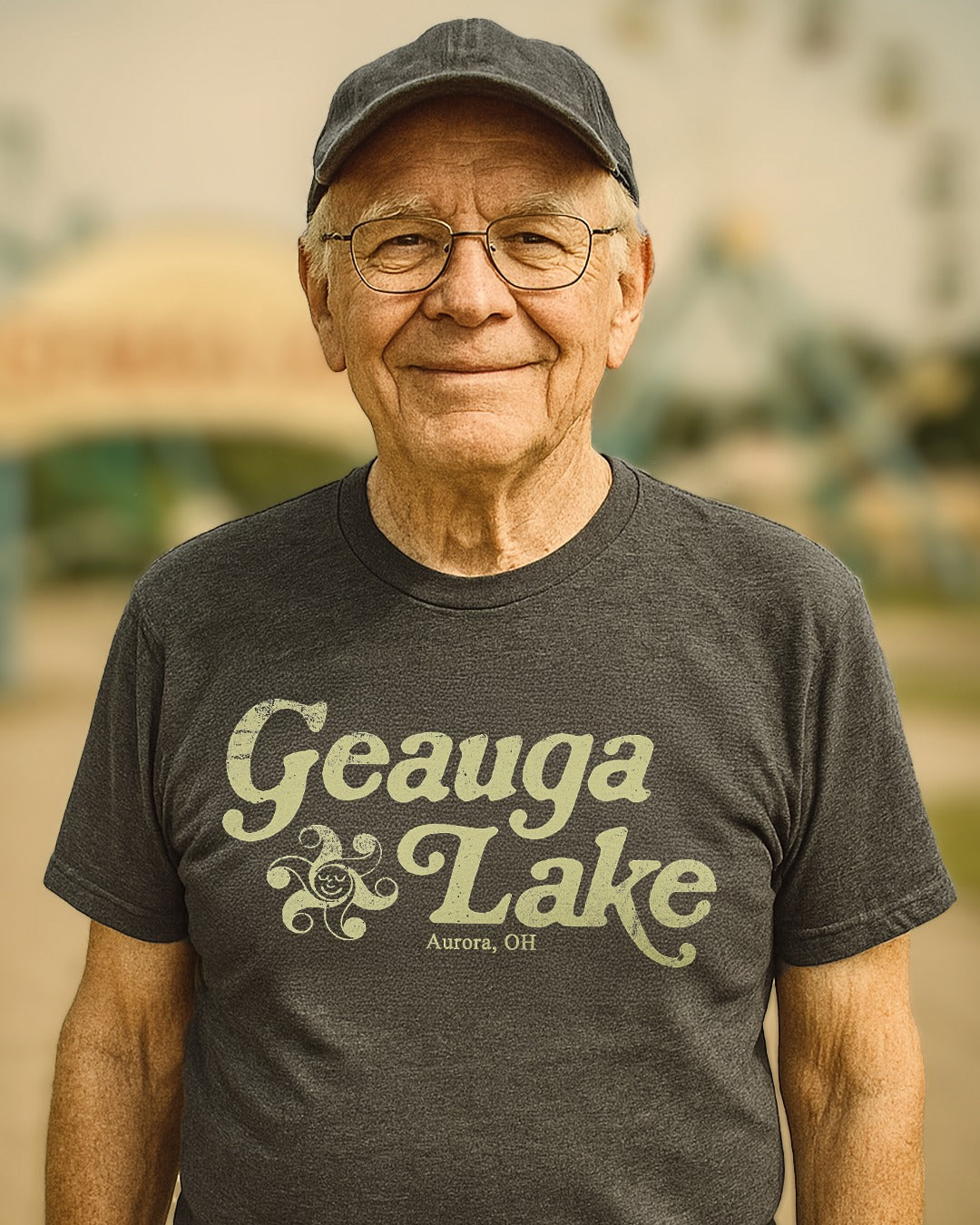When it opened in 1965 the Astrodome was dubbed the “Eighth Wonder of the World.” It was built primarily for the Houston Colt .45s baseball team but it also became the home of the Houston Oilers of the American Football League, as well as several other teams.
Get this cool Astrodome T-shirt for 20% with the code "astrodome". Click on the shirt to shop!
Former Houston mayor Roy Hofheinz is often incorrectly credited with being the first to come up with the idea of a domed stadium in Houston. As the story goes, he came up with the idea in 1952. Hofheinz and his daughter, it seems, went to a Houston Buffaloes game but it was rained out. The Buffalos were the city’s minor league baseball team and saw their games frequently postponed due to weather. If it didn’t rain, the oppressive summer heat would make it an uncomfortable afternoon at the ballpark. Hofheinz believed a covered, air-conditioned stadium would solve these problems.
However, the idea of a covered stadium in Houston had been proposed several years earlier by oil magnate Glenn McCarthy as part of a plan to bring pro football to town. At the time, there were two pro football circuits in the U.S., the National Football League (NFL) and its new rival the All-American Football Conference (AAFC). McCarthy felt confident he could convince one of the leagues to place a team in Houston.
At first, McCarthy focused on the newer AAFC. However, by the time he was able to put a plan together in 1949, the AAFC was headed into what would be its final season. Undaunted, he created a charity game involving the AAFC called the Shamrock Bowl, mostly to showcase the city’s interest in pro football.
Since 1934, the NFL had participated in the College All-Star Game. The game pitted the league champion against a squad of college players and was played in the pre-season. McCarthy’s Shamrock Bowl would be a contest between the AAFC champion (the Browns) and an all-star roster compiled from the league’s other 6 teams.
The game was played on December 17, 1949, a few weeks after it was announced that the AAFC was officially going out of business and that 3 of its teams would join the NFL. With the old league taking in 3 new teams, and the AAFC out of business, McCarthy’s chances of bringing pro football to Houston did not look good. Even worse, the Shamrock Bowl was witnessed by only 10,000 rain-soaked fans in Houston’s Rice Stadium. The All-Stars beat the Browns 12-7.
Oddly, the very successful Buffalo Bills were not one of the three teams taken by the NFL, but the hapless Baltimore Colts (no relation to today’s Colts) were invited. That left the NFL with 13 teams for the 1950 season, and to correct this imbalance the league, at first, said Buffalo would receive an expansion team perhaps as soon as 1951. McCarthy had failed to convince the league brass that Houston would be a better market, despite the promise of a 110,000-seat, covered stadium. Of course that Buffalo expansion team never materialized. Instead, in 1952, the Dallas Texans took the field for one disastrous season before folding.
A few years later, the NFL’s Chicago Cardinals, who had been ailing on and off the field for years, we're looking for a new home. Lamar Hunt, another Texas petroleum magnate, tried buying the club and moving it to Dallas to replace the Texans. Fellow oilman Bud Adams attempted to bring them to Houston. McCarthy, it seems had given up hope of bringing pro football to his Houston. Both Adams and Hunt were rebuffed by the Cardinals’ owners, the Bidwell family, who wanted to maintain control of the team and finally moved the Cardinals to St. Louis.
Hunt and Adams suggested the NFL expand, but Commissioner Burt Bell wasn’t keen on this idea. So, Hunt, Adams, and few of their millionaire buddies formed the American Football League in 1959.
It was around this time that plans were announced for a third major league in baseball. The Continental League was scheduled to begin play in the spring of 1961, with Houston as one of the cities slated to get a team.
In an effort to thwart the new circuit, the National League offered Houston an expansion team, contingent on the city building a domed stadium. The ownership group, led by Hofheinz, accepted.
Ground was broken for the new Harris County Domed Stadium on January 3rd, 1962. It was 3 months before the Houston Colt .45s played their first game in Colt Stadium, a temporary ballpark the team would use until the domed facility could be completed.
After 3 years in their temporary digs, the Colt .45s moved into the Harris County Domed Stadium on April 9, 1965. It was quickly determined that such a futuristic stadium needed a much catchier moniker, so it was soon renamed the Astrodome. Subsequently, before the start of the season, the Colt .45s changed their name to the Astros inspired by their Space Age home. The Oilers didn’t move in until 1968, two years after the announcement of the AFL and NFL merger.
While the Astrodome proved to be an adequate and unique home for the Astros, it turned out to be a terrible place for the Oilers to play. Unlike other multipurpose stadiums of the day such as Busch Stadium in St. Louis, Riverfront in Cincinnati, Three Rivers in Pittsburgh, and Atlanta’s Fulton County Stadium, the Astrodome could not be optimally transformed into a football configuration. Seats at midfield were further away from the action than those near the end zone. Also, the seating capacity of just under 50,000 made it one of the smallest stadiums in the NFL.
Indeed, in 1972 when Houston was awarded Super Bowl VIII, to be played in January 1974, the Astrodome wasn’t even considered as a site. The Oiler’s former home, the much larger Rice Stadium, hosted the game’s 71,000 attendees instead.
The Astrodome's uniqueness soon faded too as new domes, with the most modern amenities, popped up in New Orleans and Detroit (1975), as well as Seattle (1976), Minneapolis (1982), and Indianapolis (1984).
During the ‘80s the stadium was renovated, but the Oilers still weren’t happy with the facility, ultimately moving to Tennessee in 1997. The Astros moved into a new baseball-only park in 2000.
Three other pro football teams called the Astrodome home over the years: The World Football League Houston Texans in 1974, the USFL Houston Gamblers in 1984 and 1985, and the Houston Energy of the Independent Women’s Professional Football League from 2002-2006. The University of Houston Cougars football team also played there from 1965 to 1997 as did the NBA’s Houston Rockets from 1971 to 1974. Two soccer teams, the Houston Stars (1967-68) and the Houston Hurricane (1978-1980) also played in the Astrodome. The Houston Livestock Show and Rodeo was also held there from 1966 to 2002.
Having been awarded a new NFL franchise in 1999, the city set about building a new football stadium next to the Astrodome. Called Reliant (now NRG) Stadium, it opened in 2002. Today, the Astrodome sits empty and where most old stadiums are soon demolished, efforts have been put forth to save the historic structure. In 2017, the Texas Historical Commission voted unanimously to designate it a State Antiquities Landmark, meaning it can’t be torn down or significantly altered without the permission of the commision.
Plans now call for the Astrodome to be renovated and used as a convention center and gathering place featuring activities in advance of events next door at NRG Stadium, particularly Texans home games.





